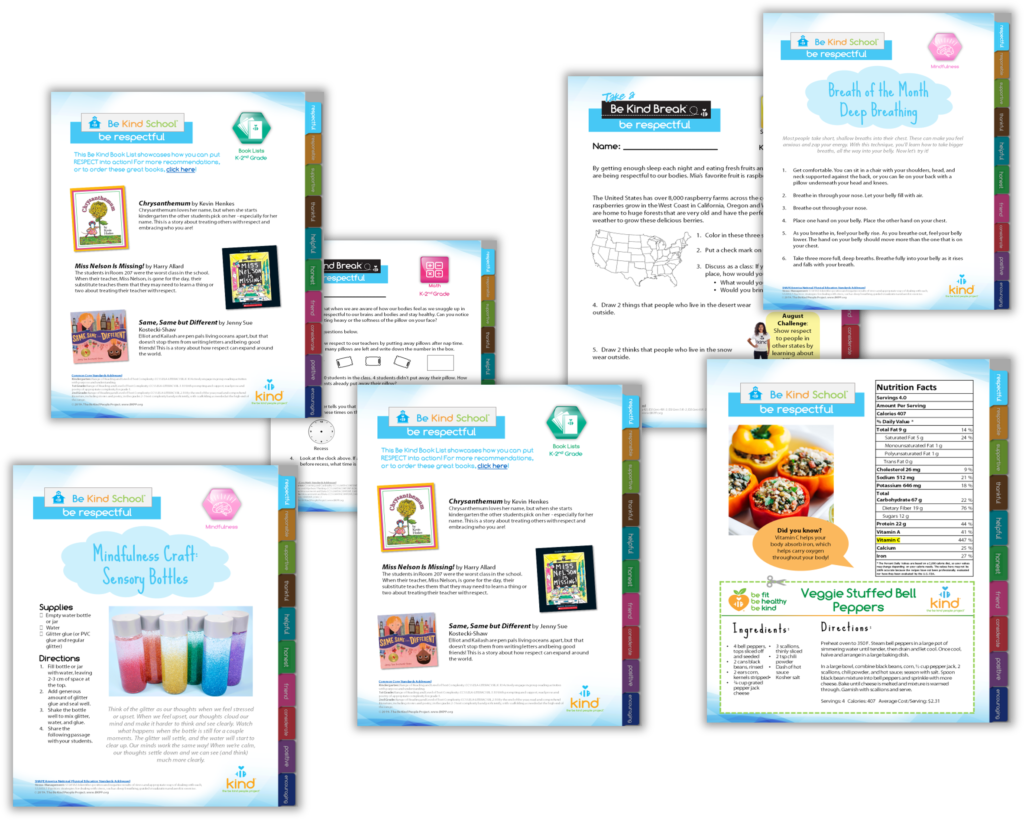- About
- Programs
- After School Classes
- All-School Assemblies
- The BE KIND Business
- The BE KIND Community Education Center
- The BE KIND SCHOOL
- BE KIND on the MOVE
- Classroom Resources
- #CyberSkills
- Family Engagement
- Fitness Programs
- Gardens
- Grace’s Group
- Health & Wellness
- Summer Programs
- Teacher Training
- Wellness Wednesday
- Athletes for Arizona
- Events
- Get Involved
- Donate
Tidy Tales: From Cluttered Chaos to Organized Oasis!
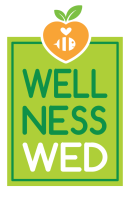
Organize & Energize
Our Be Kind Spring Cleaning Secrets Revealed!
Spring is in the air, and with it comes the irresistible urge to refresh and rejuvenate our living spaces! In today’s Wellness Wednesday, we’re embarking on a journey through the art of spring cleaning, the magic of organization, and the science behind maintaining a healthy and harmonious home environment. From decluttering with finesse to discovering the wonders of eco-friendly cleaning products, we’ll delve into the nitty-gritty of how to strike the perfect balance between cleanliness and coziness. So, grab your favorite cleaning supplies and get ready to embark on a sparkling adventure that will leave your home feeling like a breath of fresh air!
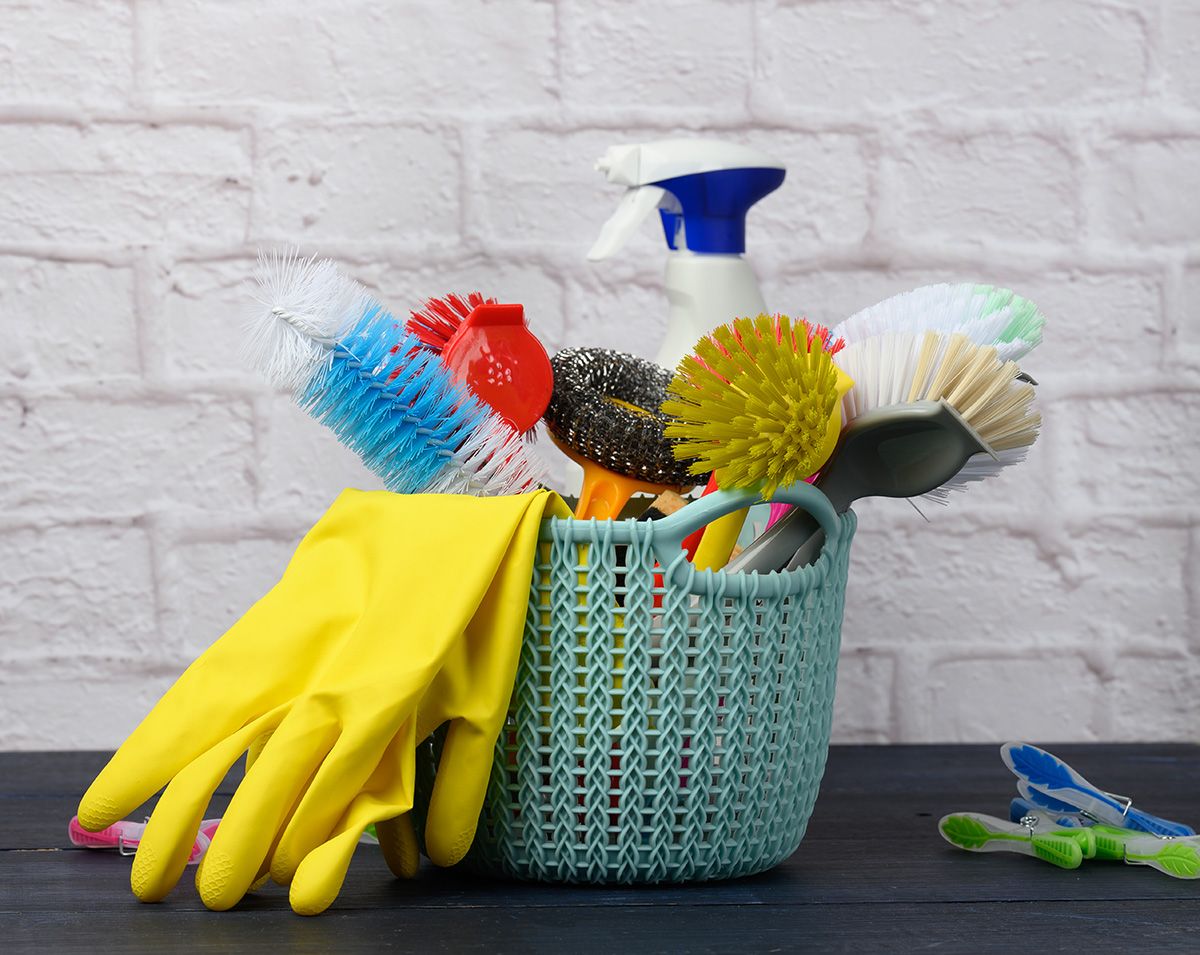
Cleaning = Healthy for You?
You heard that right! Spring cleaning isn’t just about tidying up your living space; it can also have profound effects on your overall health and well-being. Here’s how according to Dignity Health:
- Reduced Stress:
A cluttered environment can contribute to feelings of stress and overwhelm. By decluttering and organizing your space during spring cleaning, you can create a more calming and tranquil environment, leading to reduced stress levels.
- Improved Indoor Air Quality:
Dust, dirt, and allergens can accumulate in your home over the winter months, leading to poor indoor air quality. Spring cleaning involves dusting, vacuuming, and airing out your home, which can help remove pollutants and improve air circulation, leading to better respiratory health.
- Enhanced Physical Activity:
Spring cleaning often involves physical tasks such as scrubbing, lifting, and rearranging furniture, which can provide a great workout. Engaging in these activities can help improve cardiovascular health, strength, and flexibility.
- Boosted Mood:
A clean and organized environment can have a positive impact on your mood and mental well-being. Studies have shown that living in a clutter-free space can reduce feelings of anxiety and depression, promoting a more positive outlook on life.
- Reduced Allergen Exposure:
Spring cleaning involves deep cleaning surfaces, washing linens, and vacuuming upholstery, which can help reduce allergens such as dust mites, pet dander, and pollen. This can be especially beneficial for individuals with allergies or asthma.
- Promotion of Healthy Habits:
Engaging in spring cleaning rituals can foster a sense of responsibility and schedules for maintaining a clean and healthy home environment. This can lead to the establishment of healthy habits such as regular cleaning, organization, and maintenance.

When TOO Clean becomes Harmful
When it comes to spring cleaning, it’s important to choose cleaning products that are effective yet safe for both your health and the environment. Here’s a list of some cleaning products from the American Lung Association to stay away from, along with alternatives to use during your spring cleaning:
Products to Stay Away From:
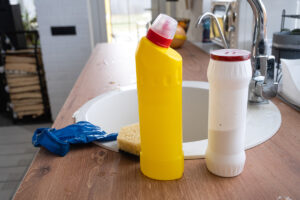
- Bleach: While bleach is effective at disinfecting and whitening, it can also be harsh and release harmful fumes. Long-term exposure to bleach fumes can irritate the respiratory system.
- Ammonia: Ammonia is another strong cleaner that can irritate the respiratory system and should be avoided, especially when mixed with bleach, as it creates a toxic gas.
- Aerosol sprays: Aerosol sprays often contain volatile organic compounds (VOCs) that contribute to indoor air pollution and can be harmful to both respiratory health and the environment.
- Phthalates: Phthalates are often found in fragranced cleaning products and are known to disrupt hormones and have potential adverse health effects.
- Triclosan: Triclosan is an antibacterial agent found in some cleaning products. It has been linked to various health and environmental concerns and has been banned in some products in several countries.
Products to Use for Spring Cleaning:
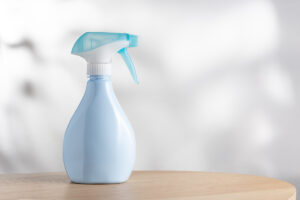 Vinegar: White vinegar is an excellent all-purpose cleaner. It can effectively remove grease, grime, and stains from various surfaces. Dilute vinegar with water for general cleaning purposes.
Vinegar: White vinegar is an excellent all-purpose cleaner. It can effectively remove grease, grime, and stains from various surfaces. Dilute vinegar with water for general cleaning purposes. - Baking Soda: Baking soda acts as a gentle abrasive cleaner and deodorizer. It can be used to scrub surfaces, remove tough stains, and neutralize odors.
- Castile Soap: Castile soap is a plant-based soap made from natural ingredients like olive oil. It is gentle on the skin and safe for cleaning a variety of surfaces, including floors, countertops, and even laundry.
- Hydrogen Peroxide: Hydrogen peroxide is a natural disinfectant that can kill bacteria, viruses, and mold. It can be used to sanitize surfaces in the kitchen and bathroom.
- Lemon Juice: Lemon juice contains citric acid, which has natural cleaning properties. It can cut through grease, remove stains, and leave behind a fresh citrus scent.
- Essential Oils: Essential oils such as tea tree oil, lavender oil, and eucalyptus oil have antimicrobial properties and can add a pleasant fragrance to your cleaning solutions. They can be added to homemade cleaners for an extra boost.
- Microfiber Cloths: Microfiber cloths are reusable and effective for cleaning various surfaces without the need for chemical cleaners. They can trap dust, dirt, and bacteria with ease.
- Bamboo Cleaning Brushes: Bamboo cleaning brushes are eco-friendly alternatives to plastic scrub brushes. They are durable, biodegradable, and suitable for scrubbing dishes, countertops, and other surfaces.
- Reusable Spray Bottles: Instead of buying single-use plastic spray bottles, opt for reusable spray bottles made from glass or BPA-free plastic. You can fill them with homemade cleaning solutions or eco-friendly concentrates.
- Biodegradable Sponges: Look for sponges made from natural materials such as cellulose or plant fibers that are biodegradable and compostable.
Ways to GIVE BACK this Spring Cleaning
Spring cleaning offers an excellent opportunity not only to refresh your living space but also to give back to your community and the environment. Here are some ways you can incorporate giving back into your spring-cleaning routine as suggested by Habitat for Humanity:
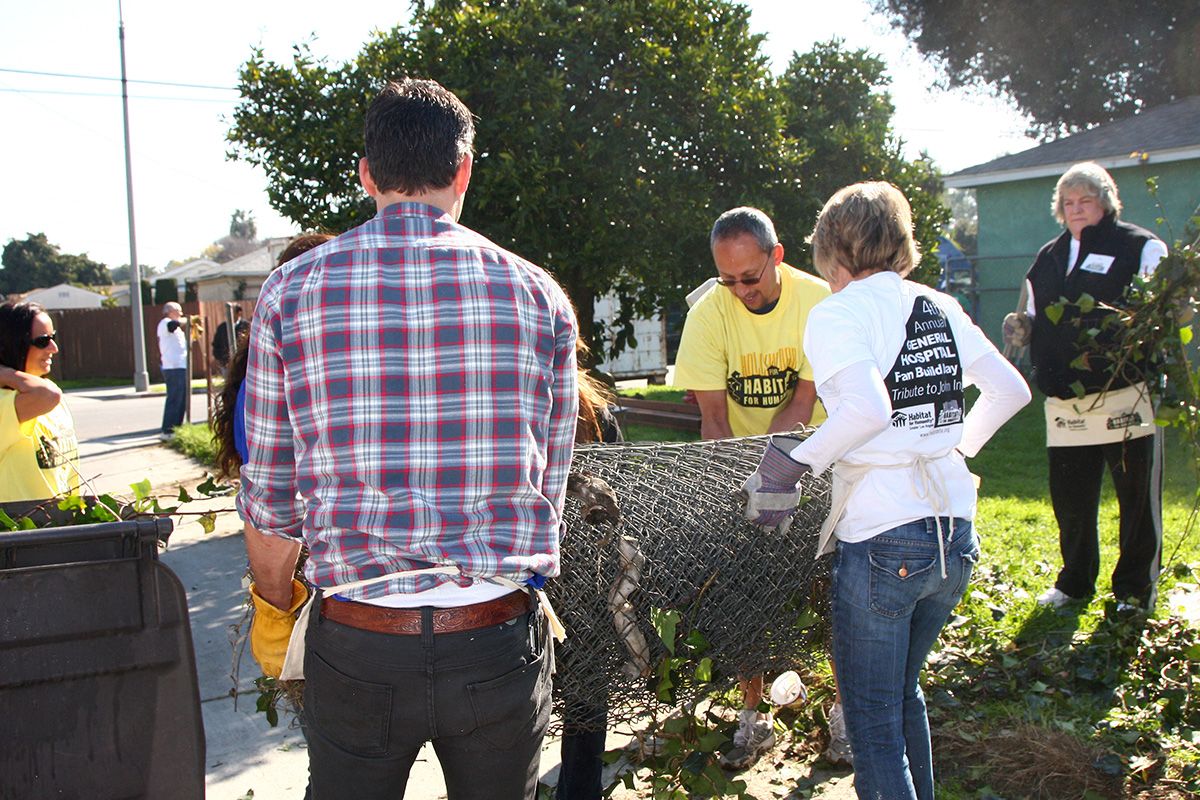
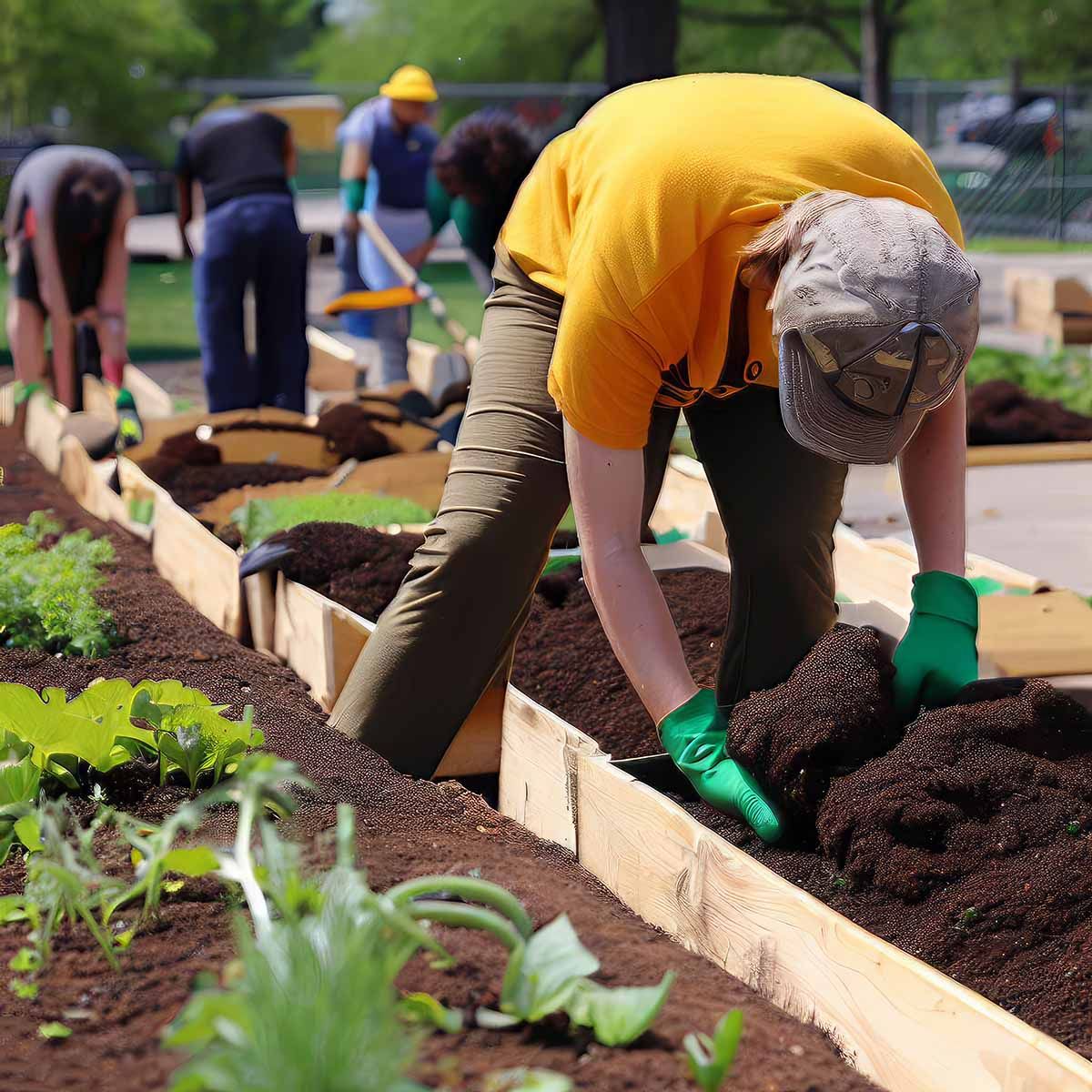
- Donate gently used items:
Go through your closets, drawers, and storage spaces to gather clothes, shoes, household items, and toys that are in good condition but no longer needed. Donate these items to local charities, shelters, or thrift stores. Your donations can benefit individuals and families in need.
- Organize a neighborhood clean-up:
Coordinate with your neighbors or local community groups to organize a neighborhood clean-up event. Spend a day picking up litter, removing debris from parks or natural areas, and beautifying public spaces. This not only improves the local environment but also fosters a sense of community pride and engagement.
- Support a local charity or organization:
Research local charities, nonprofits, or community organizations that align with causes you care about. Consider volunteering your time, skills, or resources to support their initiatives. Many organizations welcome volunteers for various activities, such as organizing events, assisting with fundraising efforts, or providing direct services to those in need.
- Recycle old electronics and hazardous waste:
Spring cleaning often involves decluttering and getting rid of outdated or broken electronics, as well as household chemicals and other hazardous waste. Many communities offer recycling programs or collection events for these items. Properly disposing of electronics and hazardous materials helps prevent environmental pollution and conserves valuable resources.
- Plant trees or participate in a community garden:
Take advantage of the spring season to engage in gardening activities that benefit the environment. Plant trees in your yard or participate in tree-planting events organized by local environmental groups. Additionally, consider joining or supporting a community garden where you can grow fresh produce, beautify the neighborhood, and promote sustainable food practices.
- Contribute to a clothing or food drive:
Keep an eye out for clothing or food drives organized by local charities or businesses. Gather non-perishable food items, toiletries, or clothing items to donate to those in need. Food banks and shelters rely on donations to support individuals and families facing food insecurity or financial hardship.
As we bid farewell to winter’s chill and welcome the warmth of spring, let’s carry forward the lessons learned during our spring-cleaning adventures. Let’s continue to tread lightly on the planet, to cherish the spaces we inhabit, and to savor the simple joys of a clean, organized, and harmonious home.
So, here’s to new beginnings, to fresh perspectives, and to the joy of a home that reflects the beauty within each of us. May your spring be filled with sunshine, laughter, and the sweet satisfaction of a job well done.
Learn More about The Be Kind People Project®
- Programs
- After School Classes
- All-School Assemblies
- The BE KIND Academy
- The BE KIND Business
- The Be Kind Break
- The BE KIND School
- The BE KIND on the MOVE
- #CyberSkills
- Family Engagement
- Fitness Programs
- Gardens
- Grace’s Group
- Health & Wellness
- Summer Programs
- Teacher Training
- Wellness Wednesday
- Athletes for Arizona
Copyright © The Be Kind People Project | Privacy Policy

